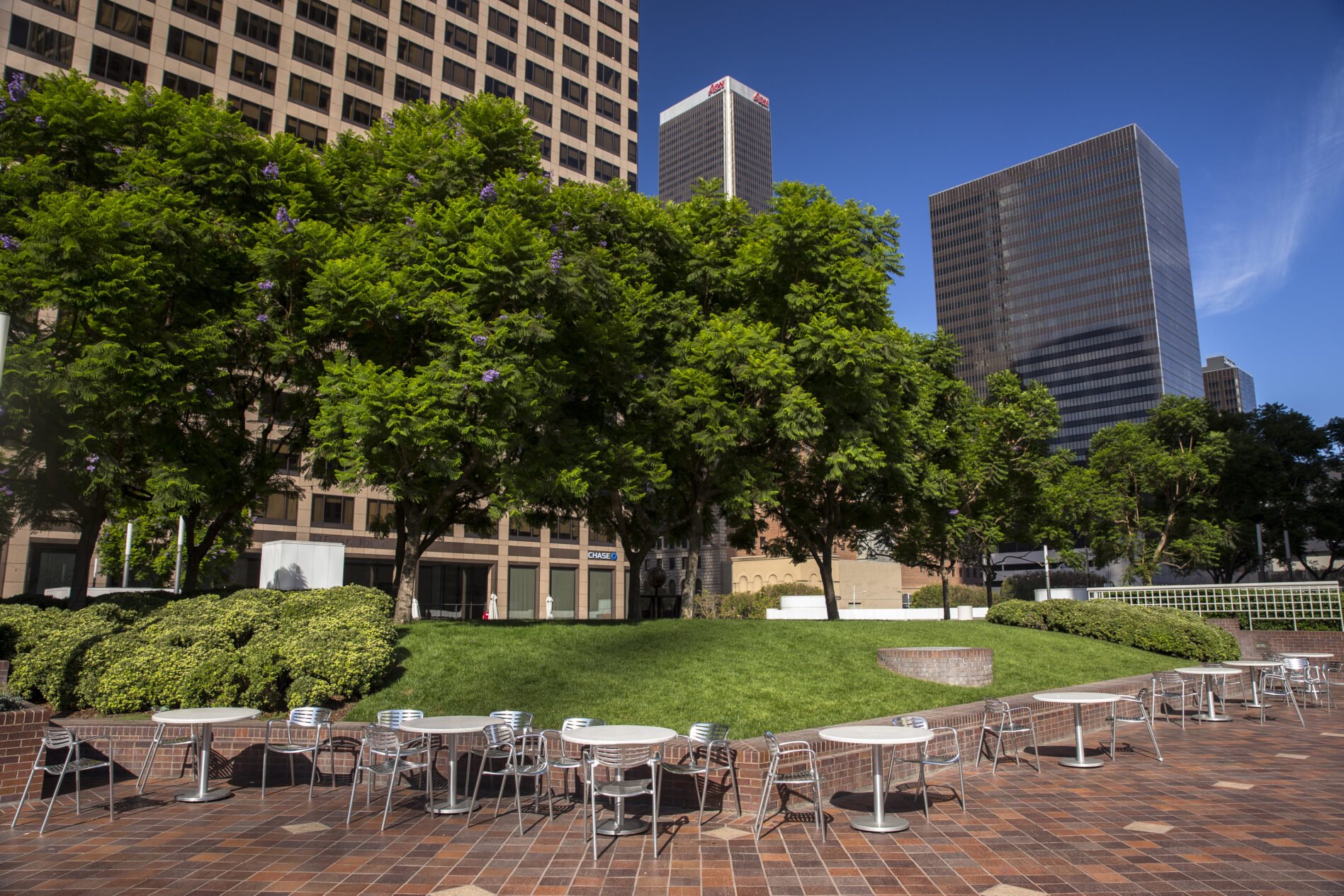Life in the big city is REALLY tough for trees. While trees in the wild often live 100 years or more, the average lifespan of an urban tree is just 19 to 28 years, according to the USDA.
What accounts for this discrepancy? Well, many of our urban environments aren’t built for trees—they’re built for people, making it much harder for our urban canopy to thrive.
But here at TreePeople, we think our cities can—and should—be made for both trees AND people. Here are four ideas for how we can do it:
Improve our soil
Making our cities more hospitable to trees starts from the ground up. There are many reasons urban soils can be difficult for trees to thrive in—for one, they are often compacted due to foot and vehicle traffic. This can greatly reduce water infiltration and prevent root growth. And on top of that, they also often lack nutrients because of the lack of organic matter left to breakdown into the soil.
So how do we fix the soil? One way is being more mindful about the way we care for the areas around our trees. Reducing the turfgrass and weeds can help preserve the soil’s nutrients, and applying mulch can help lock in moisture. It’s also important to avoid cleaning up “mess” like leaf litter or fallen fruit and seed capsules, which provide the soil with that much-needed nourishment!
Give trees space!
In cities, buildings, streets, and utilities all compete for limited space both above and below ground. This often results in a tight squeeze for trees, constraining their roots and leading to infrastructure damage that might encourage harmful pruning practices like topping, or even to the total removal of a mature tree.
It’s true that trees require a lot more space than others—for instance, our beloved native Coast Live Oak must be grown in parkways that are at LEAST 6 to 8 feet wide because of their large roots and canopy. But these trees provide important ecosystem benefits, and we need to make room for them to grow.
When we have the opportunity to plan new developments or revamp old ones, we should always advocate to create more and larger green spaces. One easy way to make our cities greener is by planting more trees in schoolyards, which often don’t come with the challenges of overhead utilities. Undertaking larger-scale infrastructure projects like undergrounding utilities can also help create more space for canopy while reducing the risk of power line damage or fires. And of course, it’s always a good idea to preserve and protect the green spaces we already have.
Diversify our canopy
In cities, it is all too common to plant a lot of the same type of tree—either for aesthetic reasons, because of availability, or out of simple convenience. But as climate change and other factors make it more difficult for trees to thrive, it’s critical that we diversify our urban forest to prevent large-scale canopy die off.
By planting a wider variety of trees, we help assure that when a pathogen or pest sweeps through the urban forest it won’t kill off every tree, and won’t spread nearly as quickly. The same goes for extreme heat or weather events—a wide variety of native and climate-adapted trees will be more likely to survive.
And as a bonus, different trees have different benefits—while some excel at capturing water or cleaning the air, others boast large canopies that provide life-saving shade. Let’s make room for ALL of these beautiful trees and their benefits in our urban spaces!

